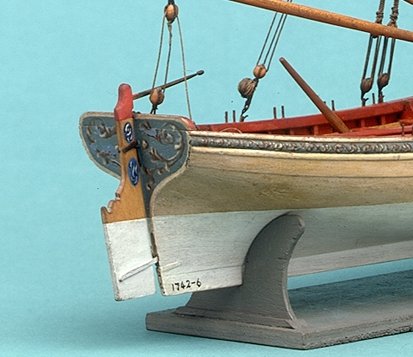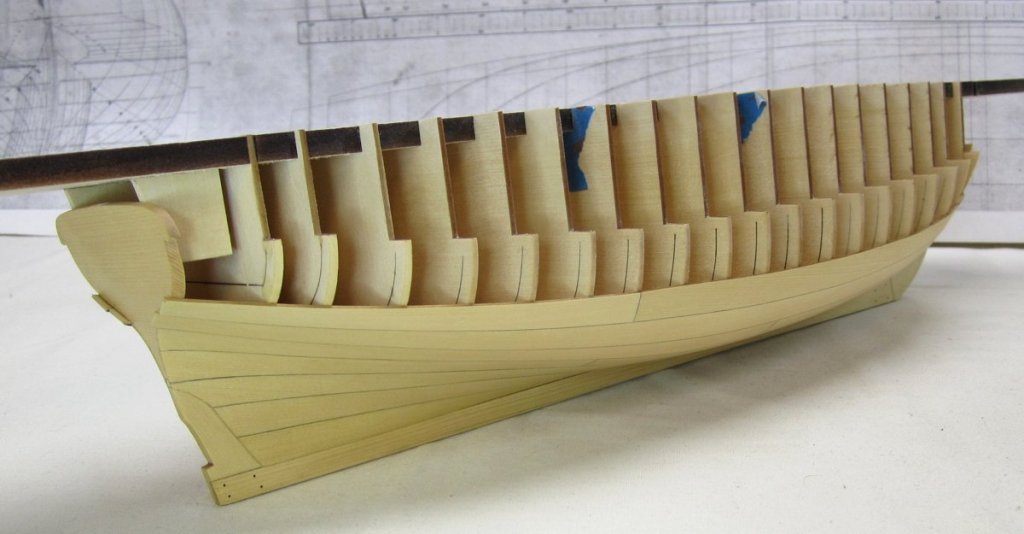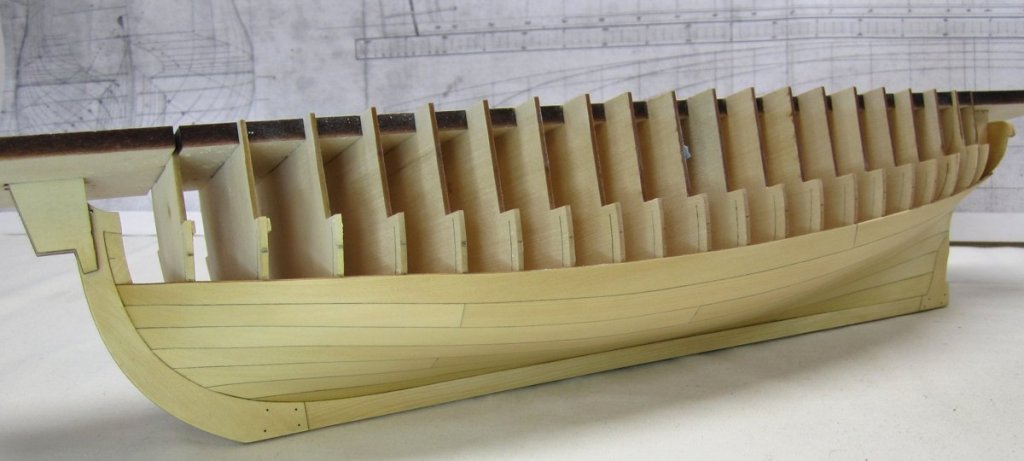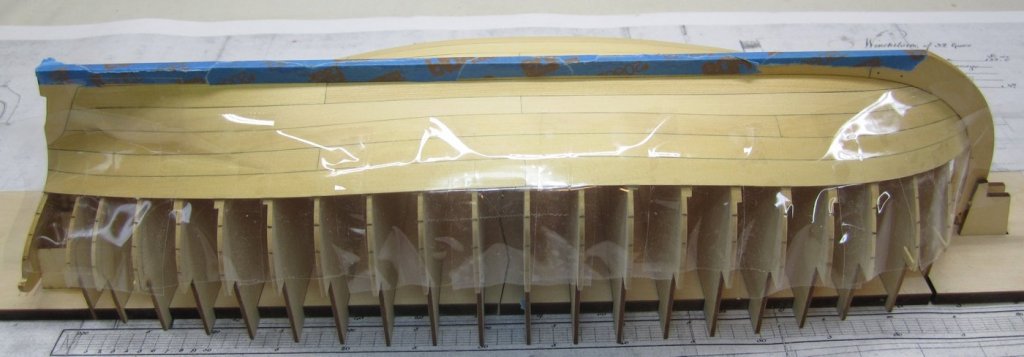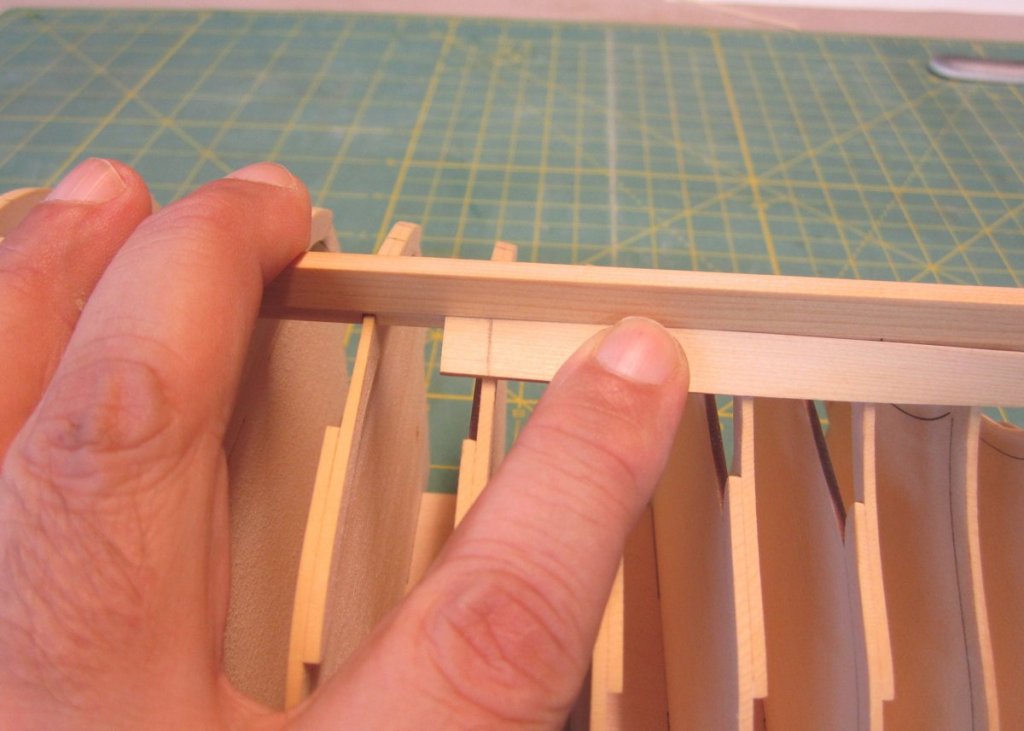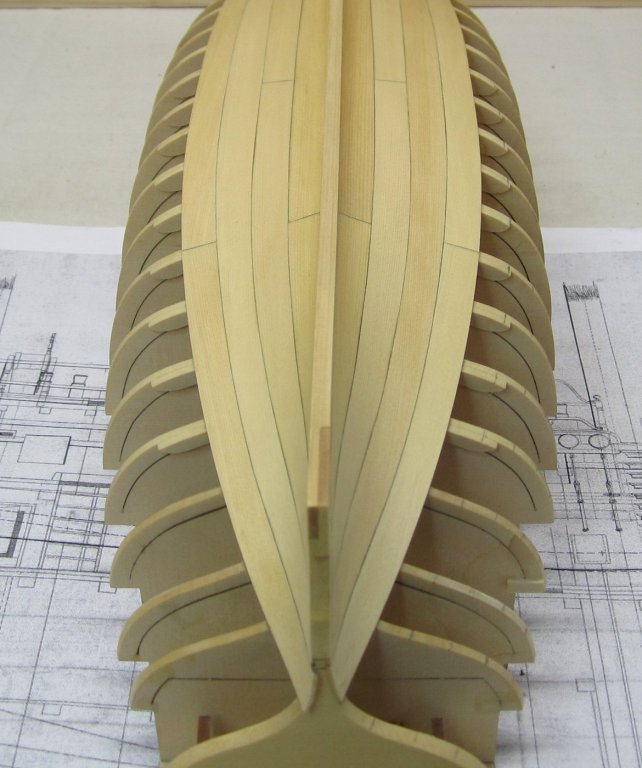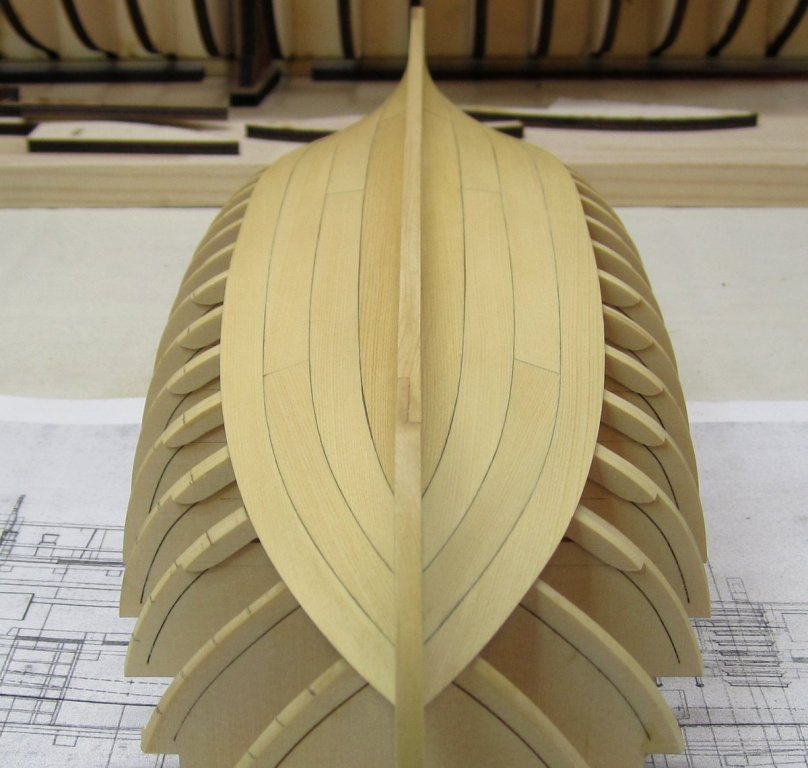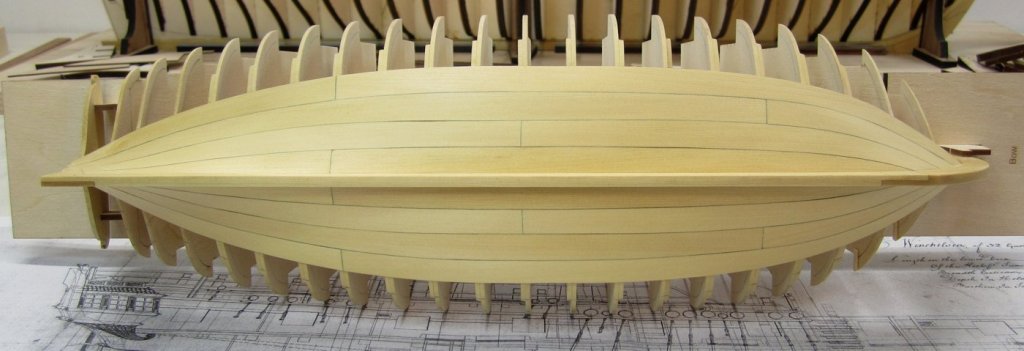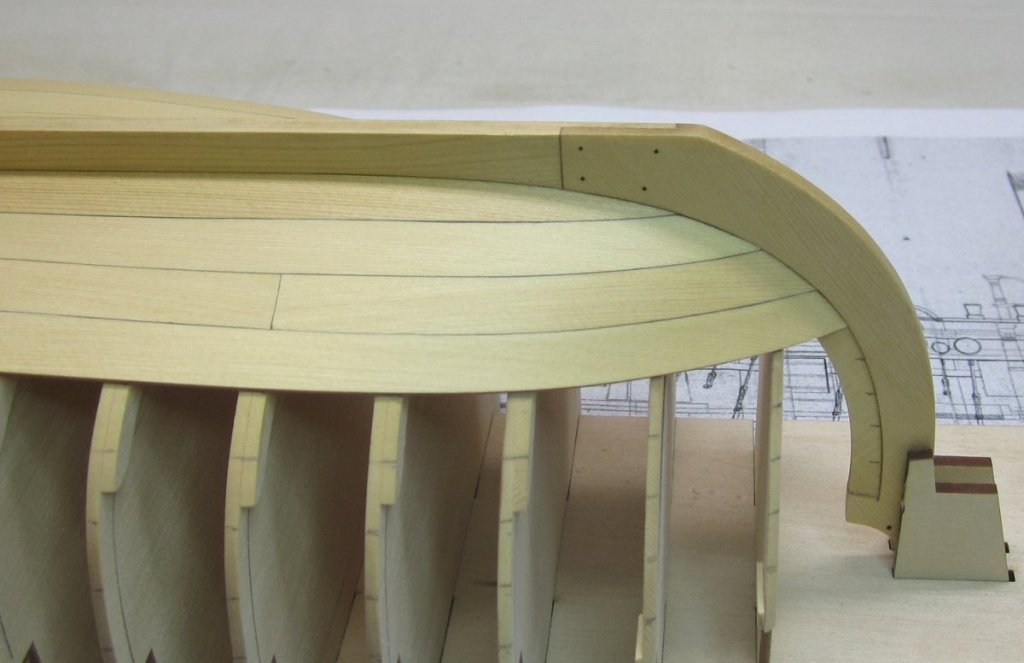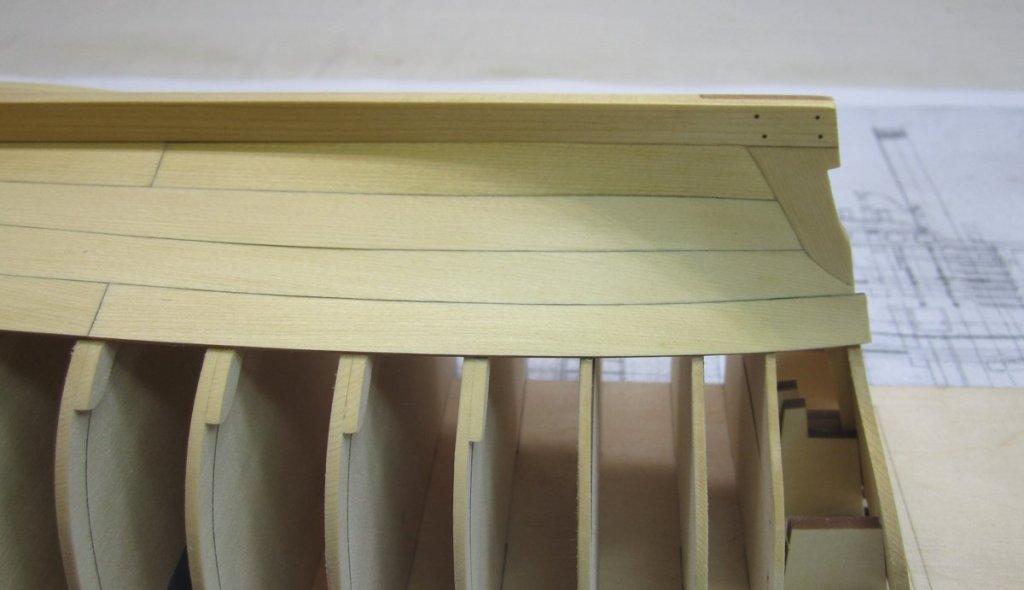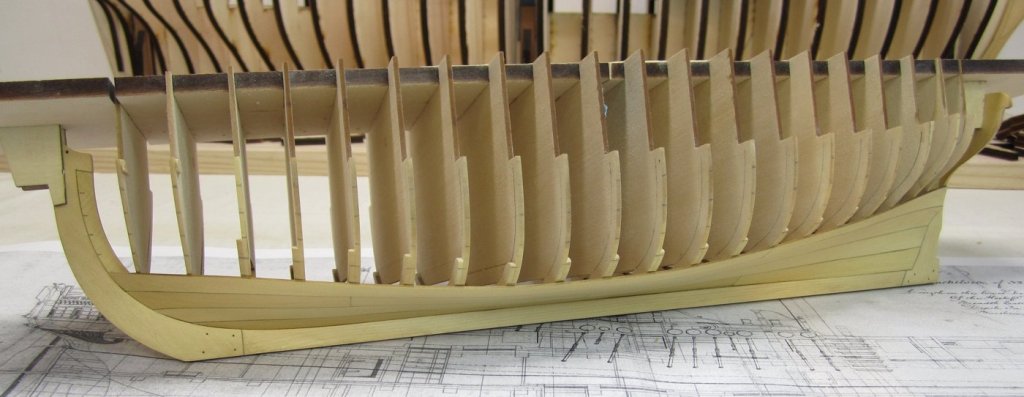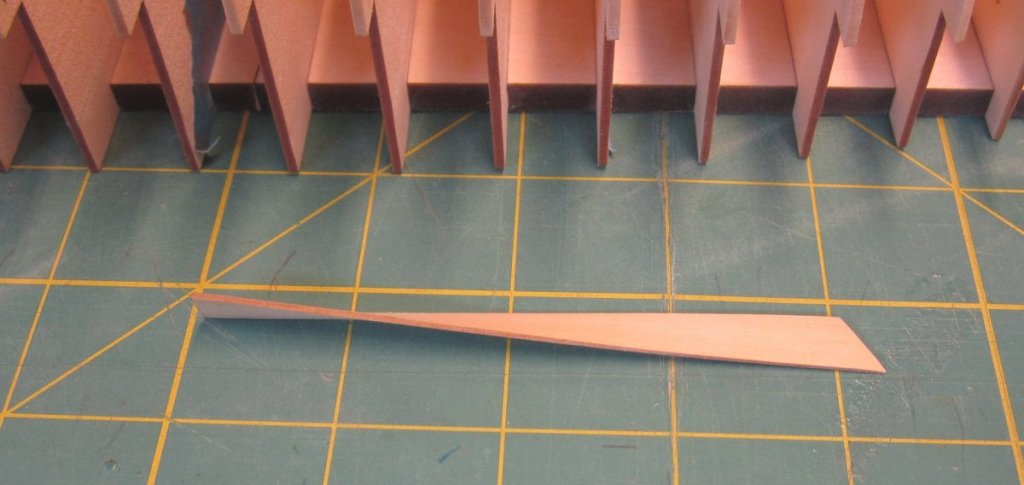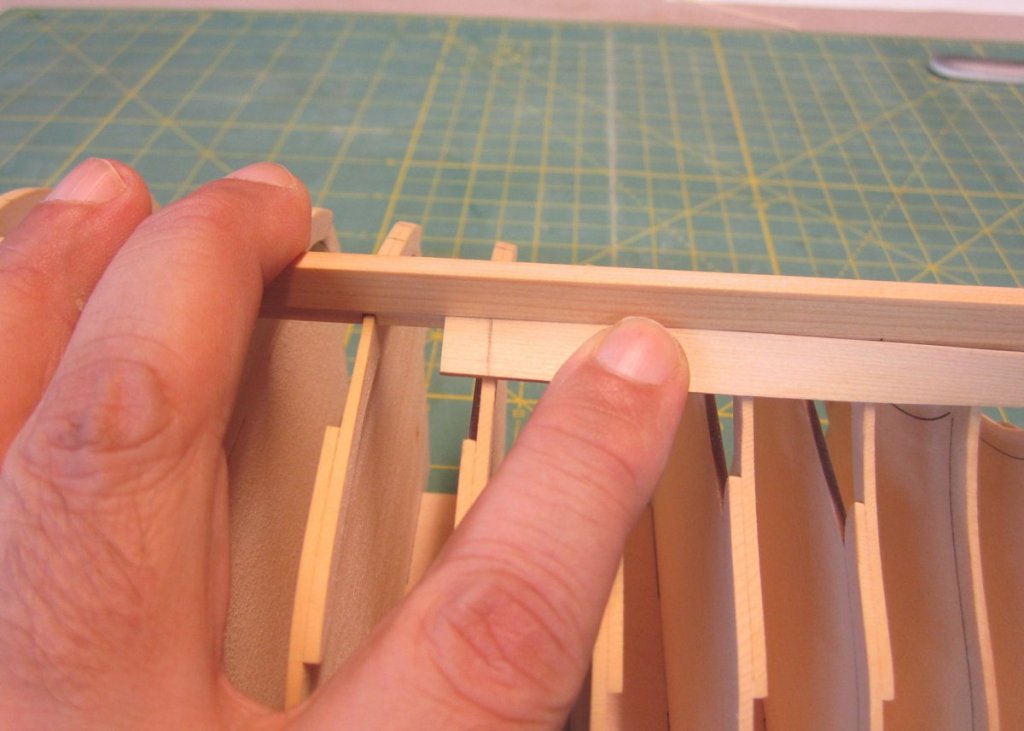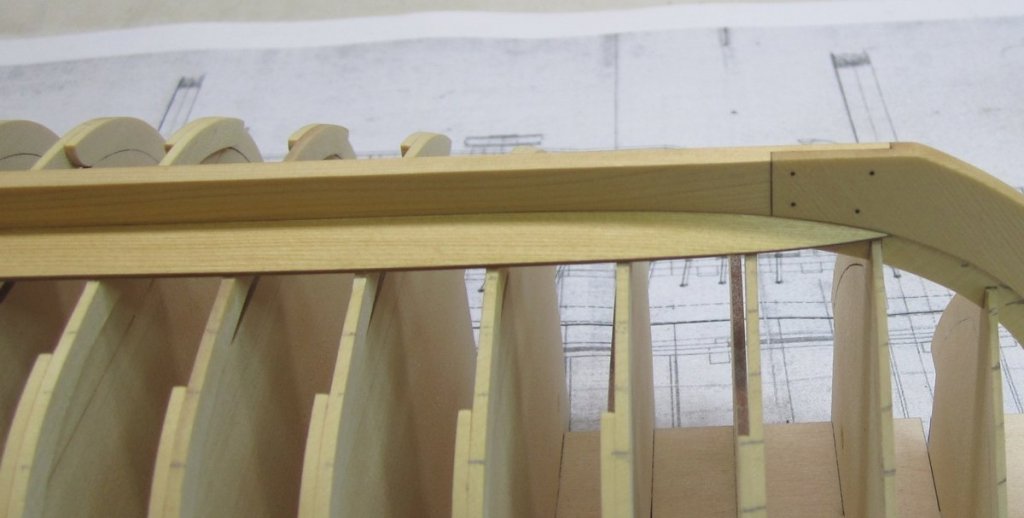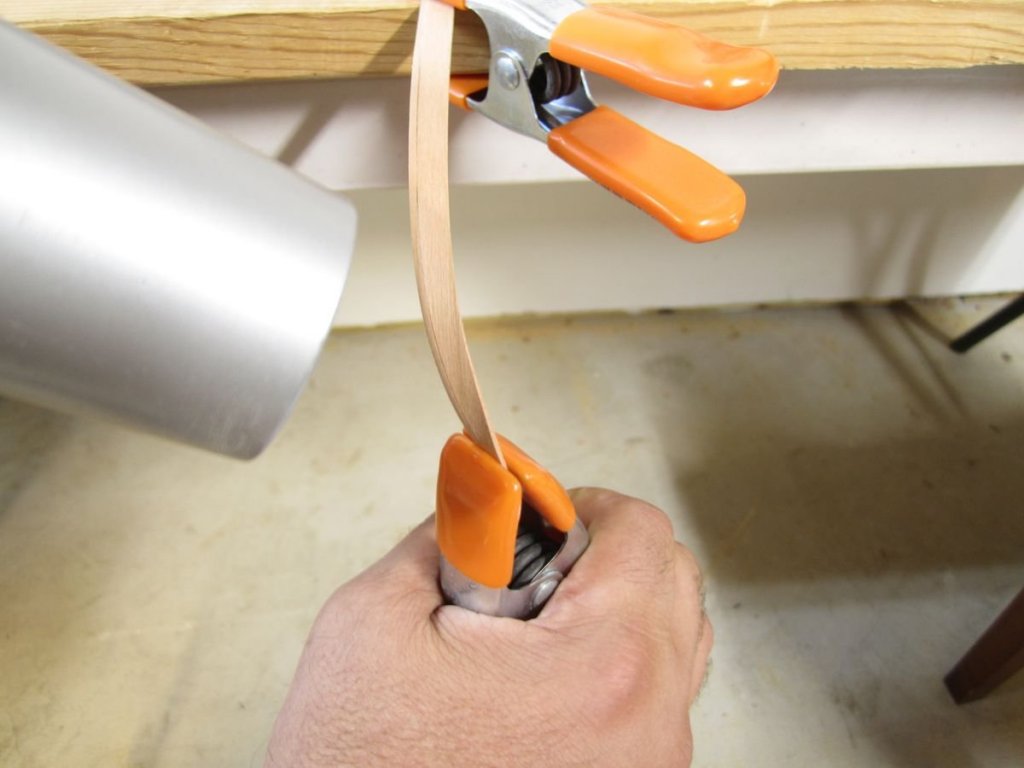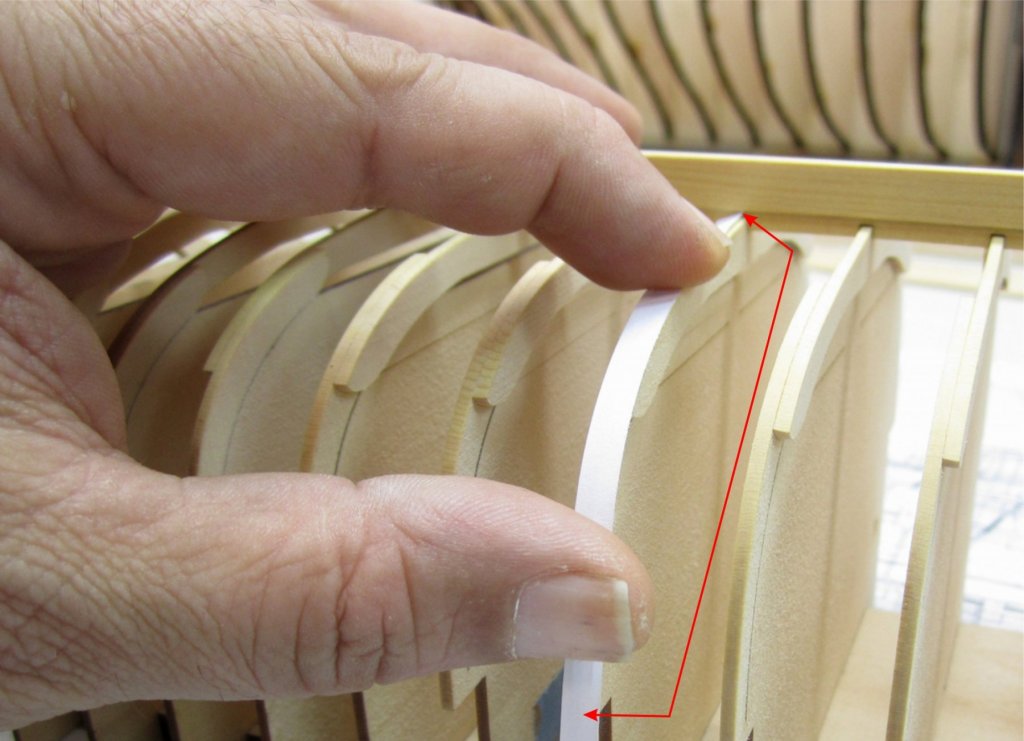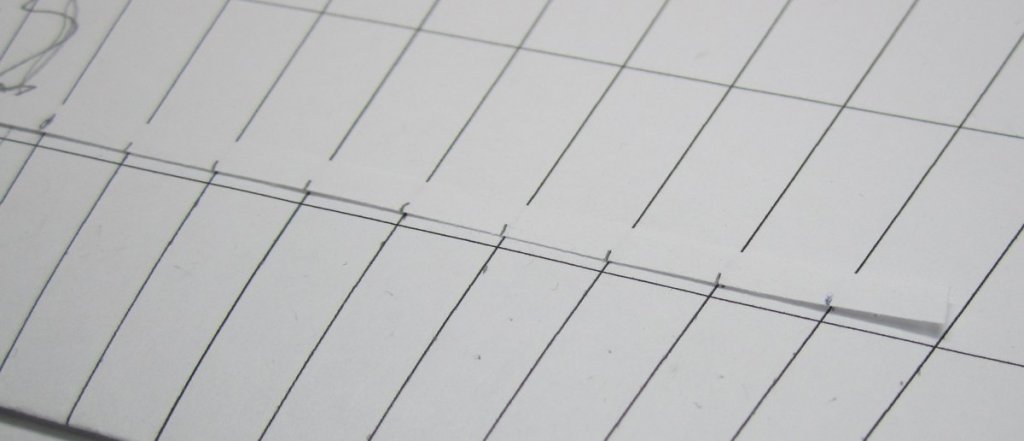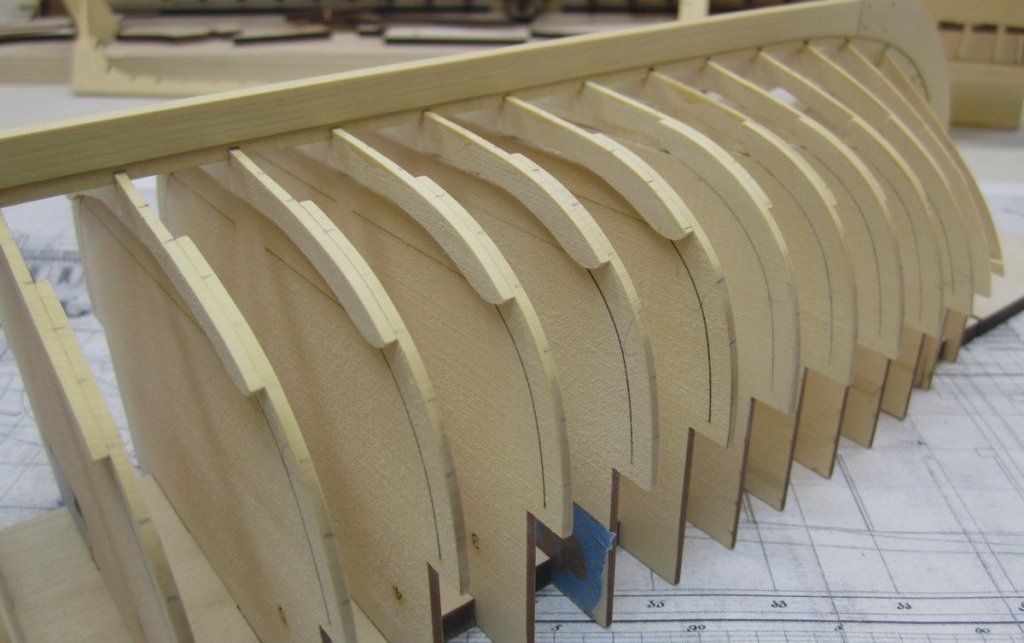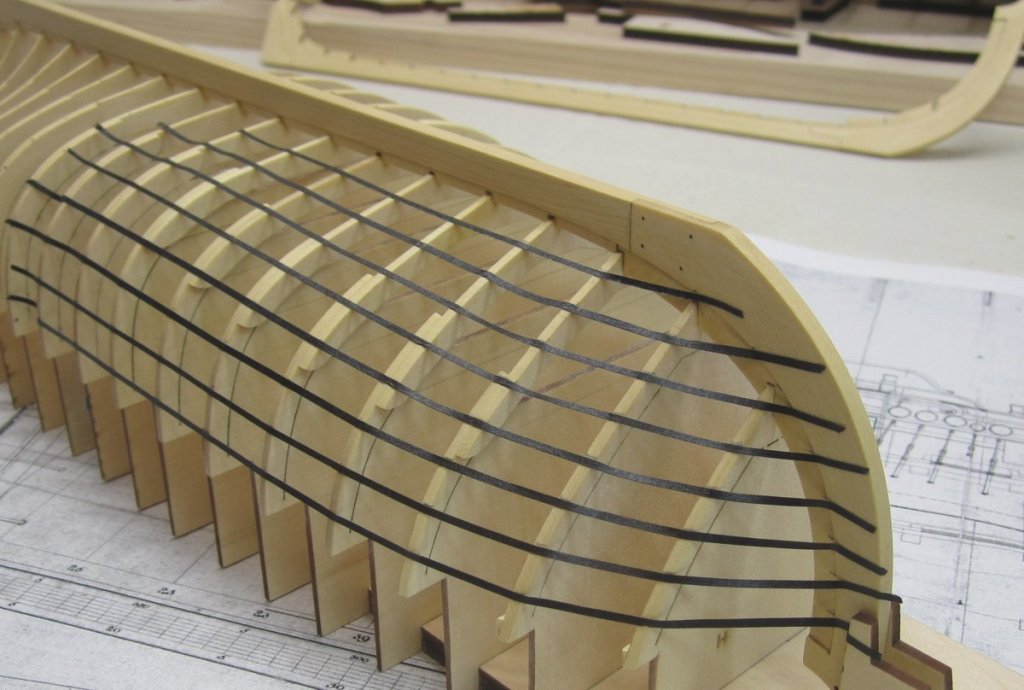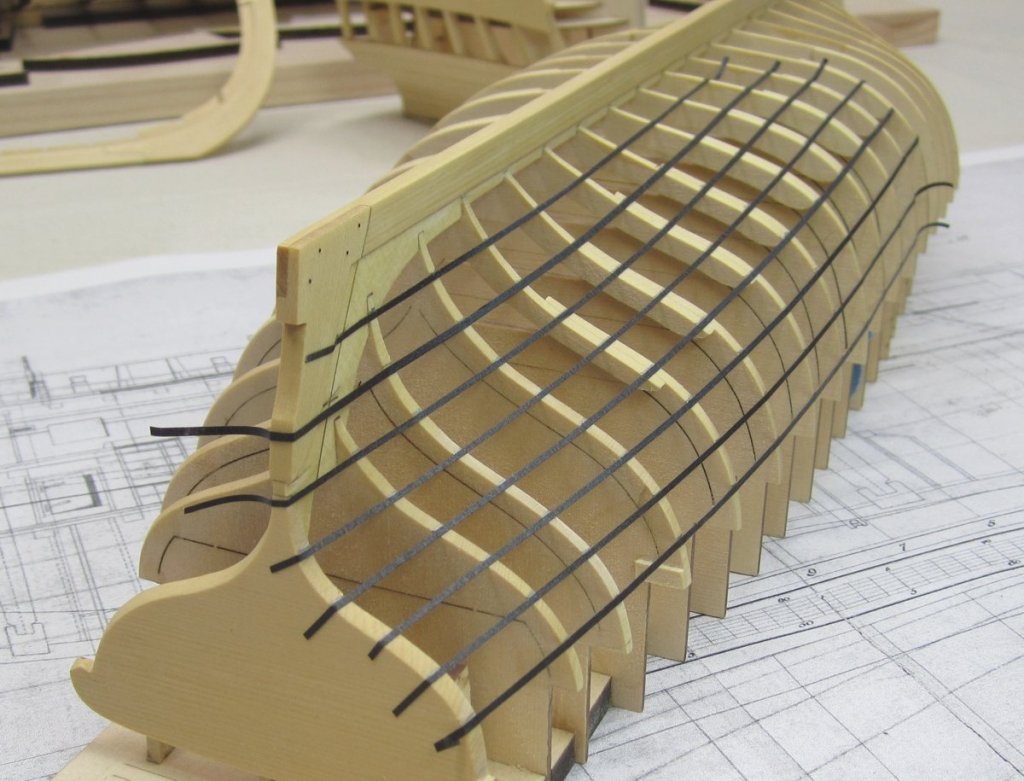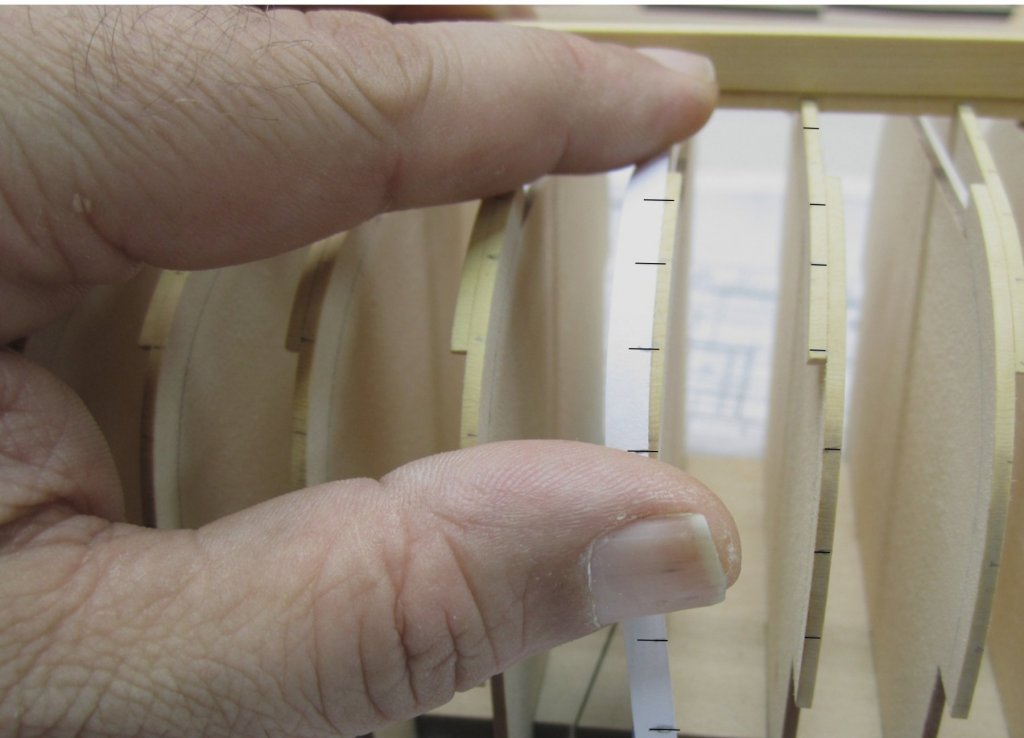-
Posts
9,700 -
Joined
-
Last visited
Content Type
Profiles
Forums
Gallery
Events
Everything posted by Chuck
-

Sail design for 18th-century longboat?
Chuck replied to Cathead's topic in Masting, rigging and sails
For all interested and who may also have Mays book on the "boats of men of war". Just turn to page 90. That is all the evidence you will need. It reproduces exactly a sail plan (contemporary draft) that shows the exact rigging arrangement. The prevailing theory is that prior to 1750 or so they used the tiller/sheet arrangement shown on the model. It doesnt make sense but it is 100% accurate for the time period. And yes the fixed block on the stem is for the outhaul. I dont understand why it isnt rigged that way on teh contemporary model. One end is fixed to the traveler ring and then run through a sheave in the end of the bowsprit. Then its taken through the fixed block and belayed inboard to a thwart. There is other contemporary evidence of this. -
Well done. That looks excellent.
- 50 replies
-
- model shipways
- 18th century longboat
-
(and 1 more)
Tagged with:
-
Wood Project source is no longer in business. They just havent taken the website down yet. For really great maple stock. Use http://www.ocoochhardwoods.com Just send them an email with the list of thicknesses you need if they arent shown in their store. The wood is very good. Great prices. I wont offer Cherry or Maple because this guy and a few others like National Balsa offer great product at prices I cant compete with in teh US. Just an FYI. Chuck
-
That looks great Rusty. The flags look very good. One thing I would suggest is that in the future, its better to cut the dolphins for the sweeps by cutting close around the dolphin itself. Then you wont see the paper at all. Then run your red paint along the edge of the dolphins to cover the white paper edge. Chuck
- 120 replies
-
- queen anne barge
- Syren Ship Model Company
-
(and 1 more)
Tagged with:
-
No not yet. I figured most would want to fully plank. But I could be wrong. I may do that version in swiss pear also so I havent decided yet.
- 421 replies
-
- medway longboat
- Syren Ship Model Company
-
(and 1 more)
Tagged with:
-
You will get both....so you have no reason to not at least try the more historically accurate version. If it doesnt work out.....you will still have the parts for the simpler version.
- 421 replies
-
- medway longboat
- Syren Ship Model Company
-
(and 1 more)
Tagged with:
-
Yes.....but I will be also including the shapes and templates for the spiled planks on the plans.....So its basically the same thing. Either way, the starter package wont include them. So anyone buying just the starter package will have to go through the process. The laser cut planks will only be included in the full kit. Hopefully many will just buy the starter package and take this great opportunity to try these techniques for the very first time. The starter package will only be available for folks on MSW taking part in the group build. It wont be available on my site. The starter package will contain, -Plans -All frame parts -The buildboard -and stem and keel parts.
- 421 replies
-
- medway longboat
- Syren Ship Model Company
-
(and 1 more)
Tagged with:
-
I could......but nope..... this is really something everyone should learn to do. Its not very difficult and if you are a serious builder and want to learn how to plank properly, this is the perfect project to try lining off. There are only 9 strakes per side in one belt. It cant get any easier. I do try and make these projects as easy to build as possible. But I draw the line at these fundamentals....I am a person who believes this is the one thing folks need to try and learn to do themselves. Its the reason why I stress its importance on every build. And as part of the group it is something that should be considered one of the "educational" aspects of the project. I even contemplated NOT including the laser spiled planks for a moment. Some say I am slowly approaching an "assembly" project like a plastic kit rather than something that is actually created. So I have started choosing more deliberately how far to take the engineering. Hopefully that doesnt seem too harsh....but it does take the fun out of it for some. I would even suggest that you discard the pre-spiled planking and instead plank it all without the aid of the laser cut materials. I may even offer them only as an extra but its something that I have thought about quite a bit. Any thoughts???
- 421 replies
-
- medway longboat
- Syren Ship Model Company
-
(and 1 more)
Tagged with:
-
Seven strakes are now completed. This is important because these first seven are 1/32" thick. The last two at the sheer will actually be thicker at 3/64". This is because the wales (like on a larger ship) are thicker then the planking below it. You can see this in the photos of the contemporary model. See below. One thing I would like to point out that concerns me.... Even though I am providing laser cut , pre-spiled planking, there is still a chance that your planking will not go as well as you might like it to. As you can see in the photo above, I have the luxury and safety of having my tick marks on each frame. This is a very welcome thing to have as a reference. As you plank the hull and work your way towards the sheer, you will still need to bevel and tweak the edges of each plank so they fit tightly against the previous strake. This needs to be done only in various areas of each strake as the hull curves. You need to match the angle on the edge of the plank already on the model. Should you over-bevel.....or under-bevel, you will be slowly changing the runs of your planks so they arent the same as mine. Therefore, as you get to the seventh strake there may be compounding very slight differences which create gaps (probably minor) which will require more beveling or more sanding for a tight fit. Having those tick marks present as a guide will help you keep on track, You can make minor tweaks as needed to keep each strake running along your tick marks. So having pre-spiled planks creates a disadvantage because you wont have this road-map. So I recommend that you do in fact line off your hull as I described so you will have some sort of plan to follow. You may in the end not create an identical lined off hull and your tick marks may not match exactly the way I have them on my model. BUT even so, having these tick marks as a guide are in my opinion .... invaluable. You guys should take the time to do so. Let me know if you have any questions. 😊
- 421 replies
-
- medway longboat
- Syren Ship Model Company
-
(and 1 more)
Tagged with:
-

Sonoma Coast Wreck Hunter - North California
Chuck replied to J Harreld's topic in New member Introductions
Its absolutely fine. Please do post any photos or images and our little community will do its best to help identify them. I am sure we have a bunch of members familiar with this era and type of vessel. Chuck MSW Admin -

Syren Rope Rocket
Chuck replied to DelF's topic in Rope Making/Ropewalks's Commercial sources for ropewalk machines
Well done. Exceptional rope and you got the hang of it very quickly.- 42 replies
-
- ropewalk
- rope rocket
-
(and 1 more)
Tagged with:
-

Syren Rope Rocket
Chuck replied to DelF's topic in Rope Making/Ropewalks's Commercial sources for ropewalk machines
Yupp...that would work. But I lose those bits all the time so I keep a bunch on hand. The machine itself is so simple but makes awesome rope. Here is the size chart you are talking about. ropesizechart.pdf- 42 replies
-
- ropewalk
- rope rocket
-
(and 1 more)
Tagged with:
-

Syren Rope Rocket
Chuck replied to DelF's topic in Rope Making/Ropewalks's Commercial sources for ropewalk machines
Glad to have you back!!! Please do post pictures and I hope to see you active on forum once again. I would love to see what you are working on now as well. Chuck- 42 replies
-
- ropewalk
- rope rocket
-
(and 1 more)
Tagged with:
-
I have removed Falconet for now.....I am in discussion with other legit MFGs who are telling me that these guys are dirty and have ripped off many of their designs etc. So for now, they are off the list. I am also hearing from other Russiam builders the same is probably true. So for now....be very leary.
-
I use whatever I can find....this particular stuff is from the post office. I have also used the stuff from home depot. Using a fine sharpie works best but pencil is OK too.
- 421 replies
-
- medway longboat
- Syren Ship Model Company
-
(and 1 more)
Tagged with:
-
This doesnt need any edge bending at all. This is an entirely different approach. Its good for any hull.
- 421 replies
-
- medway longboat
- Syren Ship Model Company
-
(and 1 more)
Tagged with:
-
Thanks.....but to clarify, the Winnie wont have laser cut planks. Its just to big. This is something you will absolutely have to do on that model. But its easy so fear not. And it doesnt take that long to do. I will make sure I detail this again when I plank the Winnie though. Chuck
- 421 replies
-
- medway longboat
- Syren Ship Model Company
-
(and 1 more)
Tagged with:
-
Thanks guys. You guys know that I am Italian and from New Jersey. But that is not why I covered my model in plastic. That is only good for my living room sofa. But I mentioned after I showed how I lined off the hull, that I would show you guys how I translate those tick marks on the frames into actual spiled planks. In the photo below, hopefully you can see the clear tape on my model. This is just plain old packaging tape. Many people use this technique and it works very well. I however changed a few things over the years. Rather than run a long strip of tape from bow to stern, I use short lengths that run from the keel to the sheer. I over lap the different small pieces as I work my way across the hull. The important thing to remember is NOT to flex the tape. Just put each segment down and let it conform to the hull shape. This is why I dont use a really long piece from bow to stern. You would be most likely to bend and flex the long piece edgewise which would not give you very accurate plank shapes. You must be able to remove the tape without flexing it edgewise and then place it on a flat surface like card stock or even the piece of wood you are cutting the plank from. By using shorter pieces running the other way and overlapped, it makes it more difficult to flex the tape at all. So when you remove it, it stays the same shape as it was on the hull. Anyway, run a pencil along the edge of the last plank already on the hull. Then trace over each tick mark on every frame. You should also mark the plank butts and the ends of the strake. Normally on a hull like the Winnie you would only need to do the bow area and the stern area to find the shape. It is easy enough to plank mid ship and there is no need to run a piece of tape across the entire hull. But in this case, I am creating laser cut planks for all of you guys. So I must do the entire strake. I could do it in sections but its just as easy to do the entire hull in one shot. The hull isnt that long. Carefully remove the tape without flexing or stretching it. Then carefully lay it onto a flat surface. In my case a piece of paper that I will scan. Then connect your tick marks and clean it up a bit using french curves. I just eye-balled it. I connected the dashes to reveal the true shape of the spiled plank. hopefully you can see it below. Normally I use a fine point sharpie because it writes on the tape better but my kids find them and I never see them again. So I m just using a pencil. You can see how I connected the dots to reveal the shape of the plank. If you placed this on card stock and cut it out with a sharp blade, then you can test it on your model. If it fits.....and it should....then trace it onto some thin wood sheet to cut your planks. I will be scanning it and making a vector drawing so I can laser cut them. Hope this makes sense....feel free to ask me any questions. Its easier to show this in a tech session than write about it. For this kit and project you guys wont have to do this....(you have the laser cut planks) but I do recommend you give it a try on any other model. You will fall in love with this method once you see how well the planks fit at the bow......snug against the frames or bulkheads. Chuck
- 421 replies
-
- medway longboat
- Syren Ship Model Company
-
(and 1 more)
Tagged with:
-
Thank you gentleman. Planking continues. I have completed 4 of the 9 strakes. Each strake has two sections. A forward and an aft plank. For the first 3 strakes working up from the keel, I started at the stern post and then added the bow section of the strake. Each section is made a bit longer after adjusting the ends that tuck into the rabbet. You need to cut the ends to length so they fall on a frame. When placing the second plank in each strake, you must cut it to length so it butts into the first cleanly and tightly. But now that I am working on the fourth strake I have switched and start at the bow. The aft section of planking can now be run off the transom and sanded flush later. You might see in the photos that I have yet to sand the last section of the fourth strake on one side. I will continue up to the shear in this fashion. Only five more strakes to go. But even when you havent planked in a year it does come back to you quickly and get easier with each strake. Here are some photos of how it looks today. These photos show the Alaskan Yellow cedar really well.
- 421 replies
-
- medway longboat
- Syren Ship Model Company
-
(and 1 more)
Tagged with:
-
Yes actually...but not many pictures. But here are the images for setting the garboard strake in position. The garboard and all of the other planks are laser cut. They will already be spiled to shape. Even so, they will need to be pre-bent to fit without forcing them into position. Unlike the MS longboat kit, this model will be planked from the keel upwards. The garboard strake is made up of two sections. It is important to start with the aft section first. Below you can see the aft section of the garboard strake with quite a bend in it. This is needed and its important to do so before gluing. The plank is 1/32" thick and was bent using the same method I always employ. I used a hair dryer to heat it up while I twisted it to shape. Here is an image from the barge construction but its the same technique used here. If its not twisted and bent enough....then just clamp it again and continue to shape it. The one difference this time however, was that I used a sacrificial piece of scrap wood on top of the plank when I clamped it to the table. The Cedar is very soft and the clamp would dent it easily. So placing a piece of wood on top of the plank and then clamping it to the table prevents it from being dented. This is just an arbitrary plank from the barge kit and not the garboard but you get the idea. Before gluing the aft section of the garboard in position, you must test it on the model. Tweak it if needed but it shouldnt need much work. One thing that will need to be done is to cut the forward end to length. Because each model might vary slightly, I made this section extra long so it hangs over the frame as shown. Just mark the plank on the center of the frame and cut it to length. Do this AFTER twisting it to shape. Then glue it into position. The second forward section of the garboard doesnt need to be adjusted in length at all. This section is pre-bent and twisted and glued into position. It is worth noting that you should bevel the edge of the garboard along the first 5 frames where it sits against the keel at the bow. This makes for a tighter and cleaner fit in the rabbet. Remember to test it before you glue it on the model after you bend it. You should be able to see where the bevel is needed. Here is a photo of the garboard completed with both sections glued onto the model. The butt seam between the sections was darkened with a pencil on one side. Here is a look at the forward end of the garboard. You can see how nicely it fits into the rabbet. I repeated this on the other side making sure they match. It isnt too difficult when the planks are laser cut. Remember that there are only 9 strakes per side. So only eight more to go!!! The garboard is the trickiest though because it sets the run for all of the other planks above it. But if I wander slightly from my tick marks, I can correct those little issues as I move forward. It is worth mentioning that you guys wont have any tick marks to rely on....unless you go through the exercise of lining out the hull as well. I absolutely recommend it. Your tick marks may not line up with mine exactly but if you wanted to give it a try with only nine strakes vs. 25 for a frigate......its good practice.
- 421 replies
-
- medway longboat
- Syren Ship Model Company
-
(and 1 more)
Tagged with:
-
I will see what I can do.
-
Skip, Welcome back. In addition, you might consider dropping by a local meeting of the Ship Model Society of New Jersey. We meet once a month at the Roseland Public Library. There are about 60 of us and we have a great time learning and encouraging each other. See out website here. http://www.shipmodelsocietyofnewjersey.org/ Chuck
-
I know...but it must sadly wait until the longboat is finished. I tink its important to get a new group project going and so I am going to get that done first. Luckily the longboat is a very quick little project.
- 130 replies
-
Now as I mentioned, this project will have pre-spiled planks. There will be no reason for anyone to line off the hull and spile the planks themselves. But I still need to do it. So if anyone is interested I will post that process here with some photos. Even though this is just a small longboat vs a large frigate, the hull must be lined off for planking and I must create a plan to follow before I cut any wood for planking. The method described below is the same thing I did for Cheerful and it will be the same thing I do for the Winchelsea. The one difference however, is there will not be a need to split this hull into two or three belts of planking. Its size dictates that the entire hull will be treated as just one belt of planking. Step one is the easy part, after doing some research to determine the correct width for your planking you must decide how many strakes will fit at mid ship (dead flat). This will be different depending on the subject you are modeling but once you look at steele or whatever sources....you can make that determination. For the longboat, I have decided that it will have 9 strakes. This is typical for these boats. Some have 8.....and some have 10. But this one will have 9 strakes. Step 2.... Cut some thin tick strips from paper. Hold them along the edge of the frames. You will need to mark the overall length of the frame from the keel rabbet to the sheer. Its very easy to do. Step 3...Take that tick strip and lay it on top of your planking fan. Because we know that this area will need to be split evenly into nine planks, its just a matter of sliding down the fan until it fills the space up. Then mark the strip with tick marks. The black horizontal lines on the planking fan were just put there so I have some reference to help me keep the strip level rather than angled. Step 4 ..Take that strip back over to the same frame and transfer all those tick marks onto the frame edge. All of the frames have been marked except for the htree frames at the bow and the three frames at the stern. Now you shouldnt do this to every frame. You should repeat this exercise for every frame except for the last three aft and the first three forward frames. Those three frames on each end of the hull are tricky. There is a much easier and accurate way to determine the run of the planks for these areas. Consider for example that at the bow, each remaining frame may not even contain all 9 strakes. So measuring their length and dividing by nine doesnt work. This next step will not only allow you see the run of the planks at the bow and stern, it will also let you double check that the tick marks you just made on all of the other frames are correct. You will soon be able to make adjustments to those as well. This is exactly what I do on every hull before planking. Step 5....Use some thin strips of black tape to visually create the run of the nine strakes. I bought some typical black art tape that was very sticky. Its like black masking tape. I cut very thin strips from it about 3/64" wide. These were used on the hull to determine the run of every strake. I do half of the hull at a time. First the aft side. Then from mid-ship to the bow. Make sure there is no dust on the frames so the tape strips stick really well. Some people prefer to use string that is glued to each frame. Use whatever method works best for you. I like the tape because it is easily re-positioned. I used the tick marks I just made on each frame to position the thin tape strips. I worked my way aft from mid-ship until I reached those last three frames with no tick marks on them. Basically I "just eyeball it". I just continue running the tape onto each frame in what I think is the natural and correct path for that plank. DONT WORRY.....REST ASSURED THAT IT WILL BE ALL WRONG. But after you place all of the tape for the nine strakes on the hull like this, you will be able to see where its screwed up. You can carefully adjust each tape line until everything looks good. Adjust and tweak until the tape runs smooth and graceful across those last three frames and right off the edge of the model. Take your time with this. Adjust them mid-ship as well because you will be able to see where some of your tick marks were wrong. Than take a sharp pencil and mark the edge of the tape to create the reference lines on those three last frames. Also do that for any corrected marks mid ship. Aft side... At the bow... It is a lot harder to describe this process in writing than it is to actually do it. This didnt take that long and spending this time makes it much more likely that your planked hull will look right. So if you have any questions let me know. Its much easier to show how to do this in person. Next I will describe how I take the marks on each frame and convert them into an actual spiled plank. Maybe this Sunday
- 421 replies
-
- medway longboat
- Syren Ship Model Company
-
(and 1 more)
Tagged with:
About us
Modelshipworld - Advancing Ship Modeling through Research
SSL Secured
Your security is important for us so this Website is SSL-Secured
NRG Mailing Address
Nautical Research Guild
237 South Lincoln Street
Westmont IL, 60559-1917
Model Ship World ® and the MSW logo are Registered Trademarks, and belong to the Nautical Research Guild (United States Patent and Trademark Office: No. 6,929,264 & No. 6,929,274, registered Dec. 20, 2022)
Helpful Links
About the NRG
If you enjoy building ship models that are historically accurate as well as beautiful, then The Nautical Research Guild (NRG) is just right for you.
The Guild is a non-profit educational organization whose mission is to “Advance Ship Modeling Through Research”. We provide support to our members in their efforts to raise the quality of their model ships.
The Nautical Research Guild has published our world-renowned quarterly magazine, The Nautical Research Journal, since 1955. The pages of the Journal are full of articles by accomplished ship modelers who show you how they create those exquisite details on their models, and by maritime historians who show you the correct details to build. The Journal is available in both print and digital editions. Go to the NRG web site (www.thenrg.org) to download a complimentary digital copy of the Journal. The NRG also publishes plan sets, books and compilations of back issues of the Journal and the former Ships in Scale and Model Ship Builder magazines.



